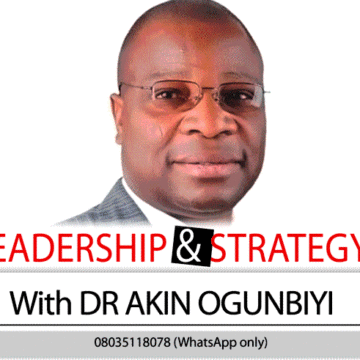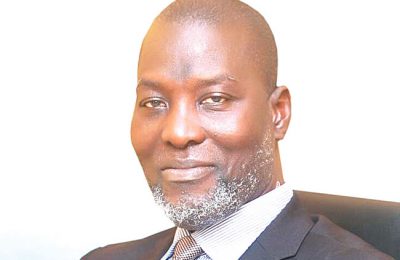THERE are indeed, no conclusive theories in leadership literature that equate it with power. What we know is that the concept of power is a major component of the influence process. Influence is the power to exert control and even manipulate someone. A person of power can determine individual tendencies. Those in leadership positions are wielders of power and they often draw on it to effect change.
Good leaders collaborate with followers to promote collective goals. But some bad leaders use power in destructive and toxic ways. They use leadership to achieve pecuniary and selfish personal ends.
Today, I want to discuss some dimensions of the leadership tree and their relational concern for both leaders and followers in the workplace.

An effective leader plays a vital role in achieving success of the business. He is the driving force behind the organisation’s vision, goals and direction. The characteristics of this wielder of influence include a combination of traits, skills and behaviours that inspire, guide and motivate the followers towards achieving corporate goals. He runs with a clear vision that aligns with organisation’s bigger objectives and goals. He communicates respectfully with people he might not agree with and listen carefully to connect with them at the heart level. His body language is meaningful and radiates inspiring intelligence.
This leader is empathetic and always adapt to changing circumstances in order to make necessary adjustments. He asks questions, prods and factors into his problem-solving game plan, new ideas, new insights, new patterns and new propositions.
Colleagues and associates refer to his style of leadership as “Influencer Leadership.” He is always creating an electrifying, purpose-driven, positive work environment with warmth and energy. He leads a team where individual contributions (that are collaboratively achieved) help the organisation to achieve “true and healthy” competitive advantage. Organisation’s products and services are maximum benefits-oriented. He encourages flexible work opportunities that also guarantee career growth. He matches vision with roadmaps and checkpoints.

The feedback loop is a must in the organisation. Positive and negative feedbacks are encouraged. The leader must not just listen to what agrees with his own way of thinking. Negative feedbacks pull you back so that you do not drift into wrong conclusions and thereby take wrong decisions. Listen to both sides. The leader must not just listen to the voices that amplify what he wants to hear. Otherwise, he will be an echo chamber.

An organisation is a “Big Talent Pool.” The leader must not limit people. It must be an inclusive workplace where DE & I (diversity, equity and inclusion) reigns. The leader must promote the talent pipeline by increasing employee engagement and trust. There must be a sense of belonging and everybody must genuinely feel connected to the workplace. The leader must consistently grow affinity to the organisation.
Employees must have people they can speak to within the organisation. Let them trust their workplace. Let them believe and trust in the contributions they make to the organisation. The workplace must be focused on embracing diversity (varied experiences, ideas and opinions) and equity must be instilled. The work environment must be an inclusive one that encourages different perspectives around innovation and focus on bottom-line impact. Diversity should include; neurodiversity, backgrounds diversity, perspective diversity and thinking style diversity, among others. It is the leader that provides the context in a way that followers understand it and the path to productivity and growth is made easier. This can be described as “finding authentic rhythm” in the workplace.
To win and be successful, the leader must know that it is not only about you but also others. The leader must challenge the followers’ beliefs and values as well as strengthen their emotional muscle. Leadership becomes a successful journey when others choose to follow the leader not necessarily because of power, authority and position.
The leader must always be deeply committed to excellence. Complacency is a slow and insidious poison. It seeps into an organisation unnoticed. It erodes the foundation of success and gradually breeds mediocrity. It stifles and blocks genuine innovation. Productivity wanes and hitherto highly productive team members lose their drive. Ideas become stale and stagnant and pursuit of excellence is replaced by a resigned acceptance of “just good enough.”
Let us briefly run through a list of the characteristics of bad leadership. They include selfishness, cognitive errors (poor decision-making and wrong steps as well as actions), environmental factors such as ineffectiveness and ethical issues. Also, the leader is incompetent, rigid and lacks self-control. He develops and emplaces callous tendencies. He is uncaring, unkind and insensitive. He disregards the welfare of the people except those in his “inner circle.”
Leaders must be careful with unrealistic expectations. It crushes morale and fosters a culture of perpetual stress. Lack of recognition, discrimination and undervaluing colleagues are also symptoms of bad leadership: Unfair treatment of colleagues breeds resentment, damages morale, slows down momentum and creates a toxic work environment. Always provide the necessary information colleagues need to understand the goings-on in the business and also, strategic decisions. Traits of bad leadership include, lack of transparency and accountability.
Let me conclude by stressing the fact that the ability of leaders to learn and always grow their skills with training and retraining, will uniquely differentiate them. The leader must always impact execution with freshness and an open as well as inquisitive mind and demeanor. Do not forget the two (2) sets of skills for leadership success: (1) They are always achieving the basic responsibility excellently and (2) They differentiate themselves with unique skills that enable needed value-delivering execution by combining both adaptive and technical frameworks.
READ ALSO: Ebonyi: Court sentences man to death over motorcycle, phone theft








